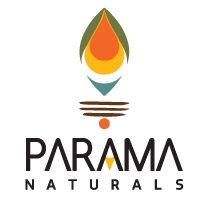Gudi Padwa & Ugadi Traditions with Turmeric for Wellness
In India, the Spring or Vernal Equinox (Basant Sampat or Vasant Vishuva) marks the celebrations of Gudi Padwa (in the western region of India) and Ugadi (in Andhra Pradesh, Telangana and Karnataka) to mark the beginning of the New Year.
The social and cultural fabric of India is so inextricably woven together with Turmeric, India’s ancient ingredient for skincare & wellness.
Decorations
One of the significant rituals of Gudi Padwa is the preparation of the "Gudi," a decorated bamboo stick with a bright-colored cloth and a copper or silver pot placed at the top. Turmeric is used to decorate the Gudi, and it is believed to bring good luck, prosperity, and positivity into the house.
In addition, turmeric is also used to make a paste called "Kumkum," which is used to decorate the forehead of the deities and individuals during the festival. Turmeric is also used to make "Mango leaf Thoran," a decorative item that is hung on the main door of the house to signify good luck and prosperity.
Foods
"Puran Poli," a sweet flatbread filled with a mixture of jaggery and split chickpeas is a must-have during Gudi Padwa. Turmeric is added to the dough to give it a bright yellow color, and it is believed to symbolize the sun's warmth and energy. It is also used to give a lovely colour to “Shrikhand”, a sweet made from hung curd, another traditional dish eaten during Gudi Padwa.
In Ugadi, one of the significant rituals is the "Ugadi Pachadi" ceremony, where a special mixture made of various ingredients is prepared and offered as prasad to the deities. The mixture, also known as "Bevu Bella" in Karnataka, comprises six tastes- sweet, sour, salty, bitter, astringent, and spicy, which form the bedrock of Ayurveda, and which in the social context symbolize the different experiences of life.
Turmeric is one of the ingredients used to make this mixture, representing the bitter taste, which is considered critical for immunity building and overall good health.
Personal care
Turmeric is used to make a paste called "Ubtan," which is applied to the skin during Gudi Padwa celebrations. The paste is believed to have cleansing and healing properties and is used to brighten the skin and give it a healthy glow. This ritual is also an integral part of the Basant Ritucharya or the daily routine during the Spring Season, as prescribed by Ayurveda to protect and nourish the skin. The paste is believed to have cleansing, detoxifying and healing properties that help to brighten the skin and give it a healthy glow.
During the Spring season, the weather changes, and the humidity and heat can cause various skin problems, such as acne, rashes, and irritation. The ingredients in haldi ubtan, including turmeric, gram flour, and sandalwood powder, have antiseptic and anti-inflammatory properties that help to soothe and protect the skin from these problems.
Additionally, haldi ubtan helps to remove dead skin cells and unclog pores, leading to smoother and more radiant skin. In addition, this abhyanga routine with the ubtan or cleansing routine also acts to improve the circulation and improve the metabolism (digestive fire or jatharagni) and reduce the accumulated kapha element too.
Therefore, haldi ubtan is an essential part of the Basant Ritucharya to maintain healthy and glowing skin during the Spring season.
Overall, turmeric plays an essential role in the Gudi Padwa and Ugadi celebrations and is used in various rituals and decorations to signify different meanings and blessings. It is used in various ways to signify good luck, prosperity, and positivity.
Note:
To get the combined benefits of the Haldi Ubtan and Abhyanga on a daily basis, as recommended in the Ayurveda Dinacharya, and especially in the Basant Ritucharya, try the following 2 minute routine (instead of a 20-minute regime occasionally)-
Apply the Parama Naturals Turmeric Moisturizing Face & Body Oil on the whole body before or preferably after a shower, and let the turmeric work its magic on the skin and down to your deepest tissues.





